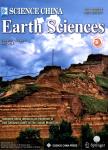Characteristics of China’s oil and gas pool formation in latest geological history
Characteristics of China’s oil and gas pool formation in latest geological history作者机构:PetroChina Exploration and Development Research Institute Beijing 100083 China PetroChina Exploration and Development Research Institute Beijing 100083 China PetroChina Exploration and Development Research Institute Beijing 100083 China PetroChina Exploration and Development Research Institute Beijing 100083 China PetroChina Exploration and Development Research Institute Beijing 100083 China
出 版 物:《Science China Earth Sciences》 (中国科学(地球科学英文版))
年 卷 期:2006年第49卷第9期
页 面:947-959页
核心收录:
基 金:Acknowledgements The authors would like to thank Profs. Li Desheng Dai Jinxin Ren Jishun and Liang Di-gang for their kindly help and helpful discussion. This work was supported by the PetroChina Company Limited (Grant No. 040501-03)
主 题:Himalayan movement, oil and gas pool formation, Neogene, Quaternary, foreland basin, cratonic basin, extensional basin, China.
摘 要:The structural activities took place extensively in the Asia continent during the Cenozoic era owing to the strong continent-to-continent collision and continuous compression between the India Plate and the Eurasia Plate. Huang Jiqing called such structural activities Himalayan movement. China’s sedimentary basins developed and took shape mainly during the Himalayan movement period. It is also the main period for formation and development of the oil and gas reservoirs. Of 366 large and medium-sized oil and gas fields currently found in China, 212 reservoirs were formed in the Neo- gene-Quaternary period. The proportion is as high as 68.2%. The oil and gas migration and accumu- lation in the latest geological period, which were controlled by the times, properties, styles and strength of the Himalayan movement, took place mainly in eight regions, such as the low uplift area of Bohai Sea, the onshore faulted sag area of Bohai Bay, anticlinorium zone in Daqing, the foreland fold-and-thrust belt in West China, the tilted structural zone in West China, the cratonic palaeohigh in the Tarim Basin, the zone of fault and fold belt in the East Sichuan Basin, and the biological gas zone in the East Qaidam Basin. The oil and gas pool formations in those regions have their own charac- teristics. With the great potential and broad prospect, those regions are the main exploration areas in China in the future.



